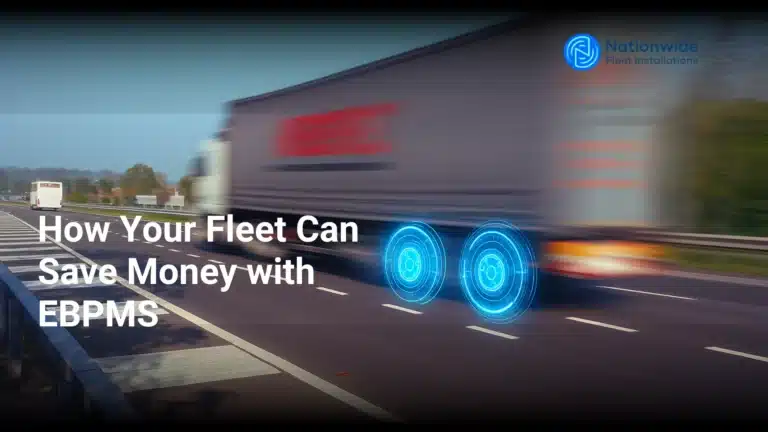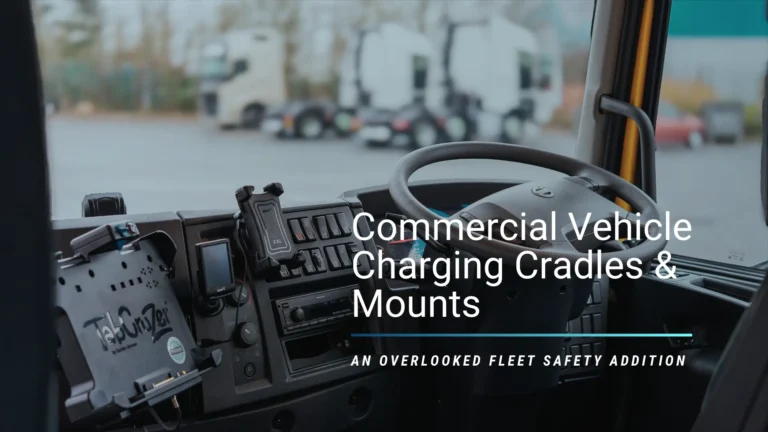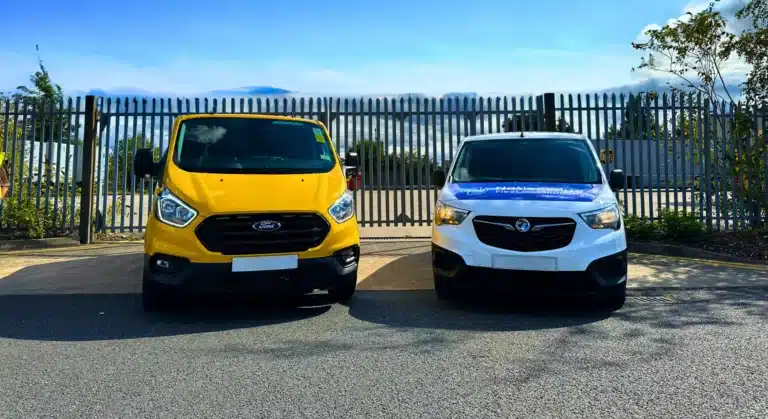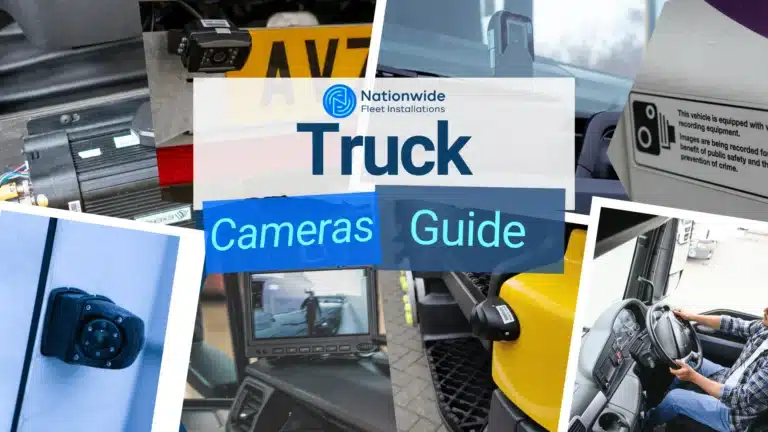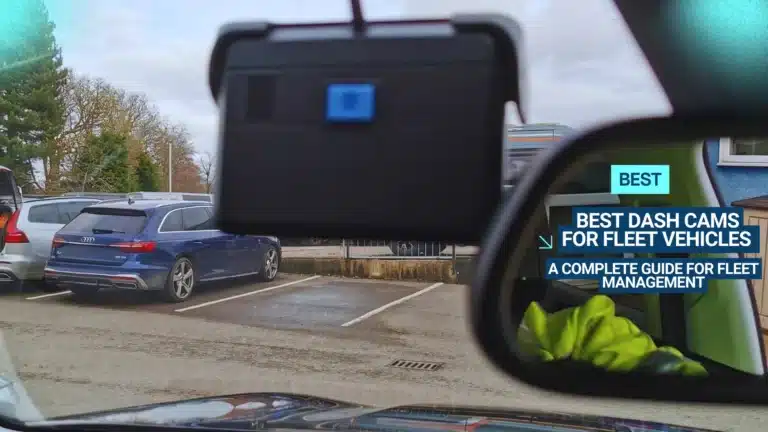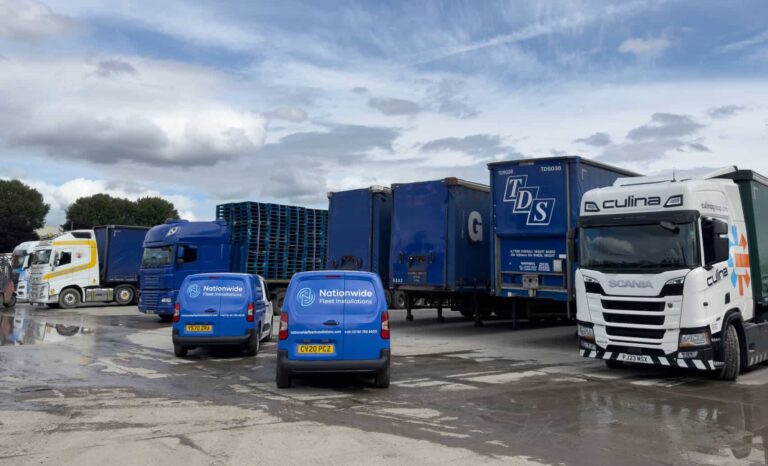Fleet Vs Consumer Dash Cams: The Key Differences That Impact Your Business
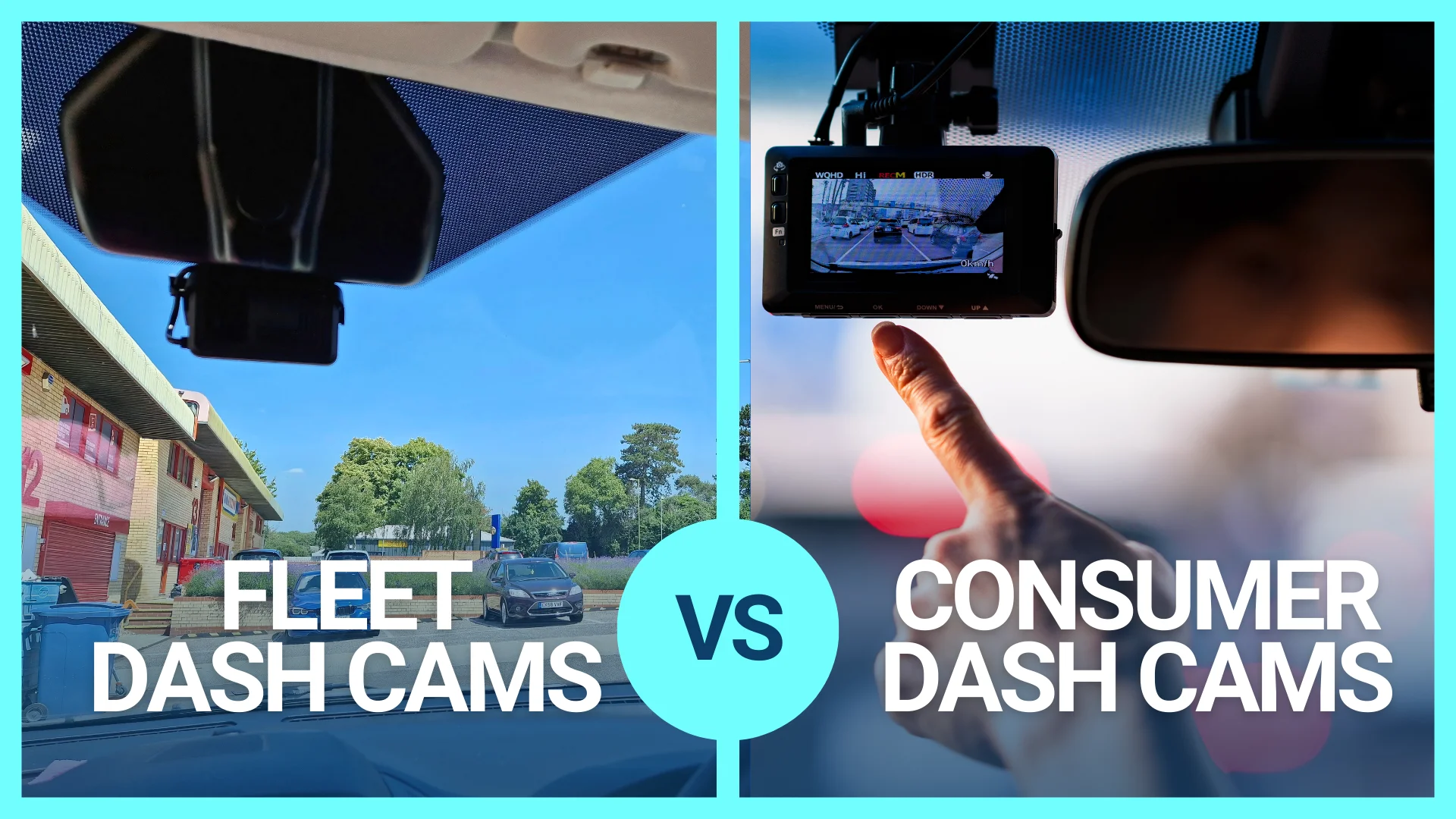
When you’re looking for a dash cam for your commercial vehicles, it might seem like any model will do. After all, a dash cam is a dash cam, right? Not quite. After years of hands-on experience integrating dash cams for fleets, we’ve seen firsthand that the choice is critical for your business.
Some are specifically designed for business use and meet the demands of commercial fleets. Others are designed for consumers, such as personal cars, and while they may do the job, they can have significant considerations that may not be immediately obvious. If you manage a fleet, you’ll need a solution that’s built for it. Here’s what that means:
Fit For Purpose
We often use the phrase “fit for purpose” a lot when talking about fleet technology for good reason. When something’s designed for the job, it’s reliable, saves time, and avoids headaches – it doesn’t add to the problem. That’s precisely what you want from dash cams in commercial vehicles.
Overview Table
| Fleet Dash cams (Commercial Use) | Standard Dash Cams (Personal Use) |
| Designed specifically for commercial vehicles and fleet operations | Designed for individual or family use in personal vehicles |
| Multi-channel support (front, rear, sides, driver-facing, load area) | Usually single or dual-channel (front and rear) |
| Professionally hardwired into vehicles | Option for professional installation, hardwire or Plug-and-play setup, usually via cigarette lighter |
| Integrated GPS and telematics connectivity | May include GPS but limited integration options |
| AI features for fleet safety: driver alerts, fatigue detection, behaviour monitoring | AI used for motion detection, emergency alerts, crash notifications |
| Privacy tools: facial blurring, GPS pause, data encryption | Basic or no privacy features, data managed by individual user |
| Designed to support driver coaching and event categorisation | Manual review needed; may lack structured event tagging |
| Scalable interface for managing multiple vehicles | App usually supports only one camera or vehicle at a time |
| Built for mixed vehicle types (vans, tippers, HGVs) with proper mounting and cables | Often limited to standard car/van setups unless model is for specific vehicle |
| Subscription-based with updates and new features | Usually one-off purchase, though some premium features may now require a subscription |
Technology and features
If you’re using a basic dash cam, the goal is usually simple: record what happens in front (and maybe behind) the vehicle. But commercial vehicles operate under much higher pressure. Your drivers are out on the road every day, dealing with traffic, time pressures, and fraudsters targeting commercial vehicles for insurance scams, as well as potentially high-value loads.
That’s why it helps to have a dash cam system that does more than record. Business dash cameras can alert drivers to hazards like forward collisions or lane departures. Some can even detect tiredness or phone use through driver-facing cameras. These features make a big difference when it comes to preventing accidents, not just recording them.
Channels
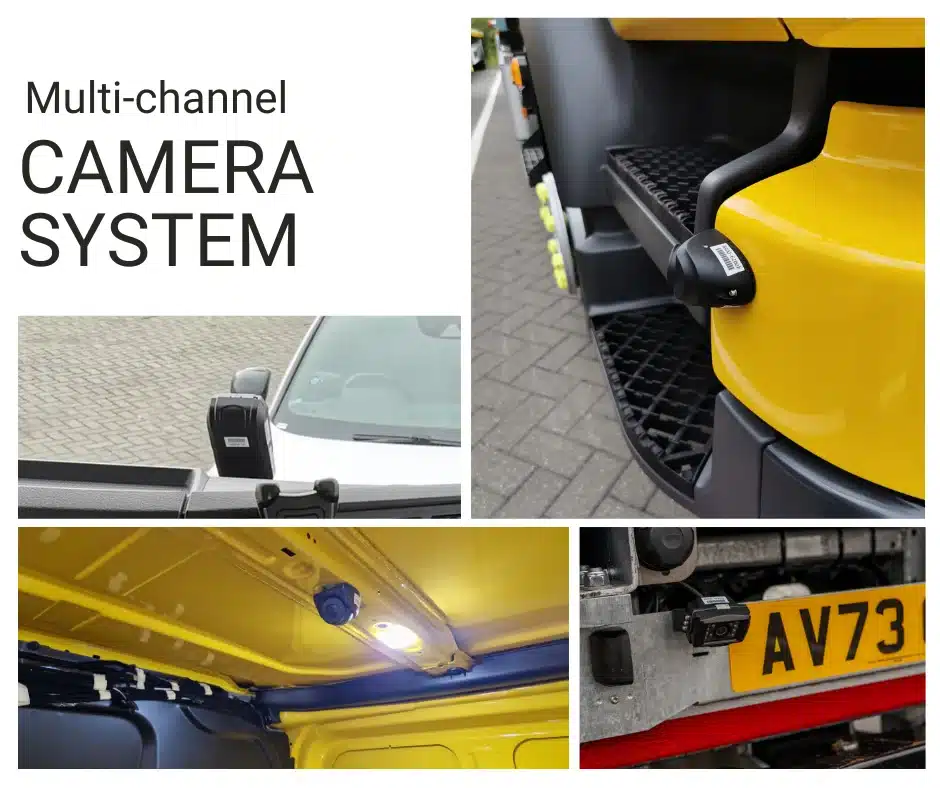
In most cases when using a personal car, a forward-facing camera or sometimes a front and rear channel camera, is usually enough. That works fine for day-to-day driving or giving coverage for your car in the supermarket or workplace car park. But when it comes to commercial vehicles, things get more complex.
Business vehicles cover more miles than personal vehicles. As a result, they face risks from every direction, including side swipes, blind spots, load area thefts, and incidents inside the cab. If you’re managing a fleet, it’s not just about recording the road ahead; you may need to have sight of your drivers from time to time (lone worker drivers), wellness checks, and compliance requirements. You may need footage from multiple angles: front, rear, sides, driver-facing, and the load area.
This is where multi-channel fleet dash cam solutions come in, often used interchangeably with fleet CCTV, video telematics, or systems connected to a DVR (Digital Video Recorder). These setups are flexible, allowing you to connect several cameras to a central unit that stores footage locally and/or sends it to the cloud. DVR-based systems are particularly useful when you need continuous recording or longer retention periods.
Basic consumer dash cams aren’t built for this. They can’t be upgraded with extra channels or integrated into broader safety systems. Fleet dash camera solutions are and that makes all the difference when you’re running multiple vehicles or handling complex operations.
Admin and labour
When we discussed the considerations not being inherently clear, time and administration were top of mind. You can use consumer dash cams in a business setting, but they often create more work. Some require manual setup: the driver has to plug them into the cigarette lighter, mount them on the windscreen, and make sure they’re switched on.
Now imagine doing that every day, across multiple vehicles. Drivers might forget to plug them in or mount them correctly. Worse, if not hardwired into the vehicle, some may remove them altogether either to avoid being recorded or because they see them as a distraction.
Another issue is that personal dash cams are popular and easy to remove, they’re also more appealing to thieves, as they potentially have higher resale values compared to fleet dash cams, which require commissioning to work correctly. Instead of being a deterrent, like fleet dash cams do, a consumer dash cam can have the opposite effect and reduce fleet security, making your vehicles a target for opportunistic criminals.
Business dash cams remove this human input entirely. They’re professionally hardwired into the vehicle’s electrical system. They turn on automatically with the engine, can’t be easily removed, and start recording every time the vehicle moves. That means your footage is far more reliable and your equipment less vulnerable to tampering or theft.
Saving time when incidents happen
Without a fleet dash cam system, retrieving footage can take up a lot of your time. Let’s say three of your vans are involved in minor incidents over the course of a week. To get the footage, you need to track down each vehicle, remove the dash cam, eject the memory card, plug it into a laptop, and search through hours of video. Some basic systems don’t even organise clips by events so you’re left scanning manually for the right timestamp.
Another common drawback of most consumer dash cams is that users can only connect the dedicated app to one dash cam at a time. You can’t connect multiple dash cams simultaneously. While you can install the app on multiple devices, each device can only be paired with one dash cam at a time.
Now imagine doing that at scale. It quickly becomes unmanageable.
Most commercial dashcam systems take care of this. Footage is uploaded automatically to the cloud, often tagged with relevant data like speed, location, or driver ID. You can access it directly from your desktop without needing to interact with the vehicle. There are facilities to add multiple vehicles and identifiers for them by driver or number plate. That means faster access to footage, incident resolution, easier insurance claims, and fewer delays when you need answers.
Supporting driver coaching
If you’re running a fleet, chances are you’re also responsible for driver safety training and ongoing coaching. It’s not just about ticking compliance boxes; it’s about making sure your drivers have the right tools to stay safe and do their jobs well.
Any dash cam footage could be used for training, but business dash cams go a step further. They often include tools that automatically categorise clips by type of event, harsh braking, speeding, near misses, and more. That means less time sifting through video, and more time using the footage to support your team.
Connectivity and tracking
Both consumer and fleet dashcams often come with built-in GPS, allowing you to link footage with vehicle location, speed, and route history. However, commercial vehicle dash cams can integrate directly with your existing telematics or vehicle tracking systems. That provides a more comprehensive view of what happened in the event of an incident and helps you manage your fleet on a day-to-day basis.
AI and automation
Artificial intelligence is now used in both personal and commercial dash cams. But how it’s used varies.
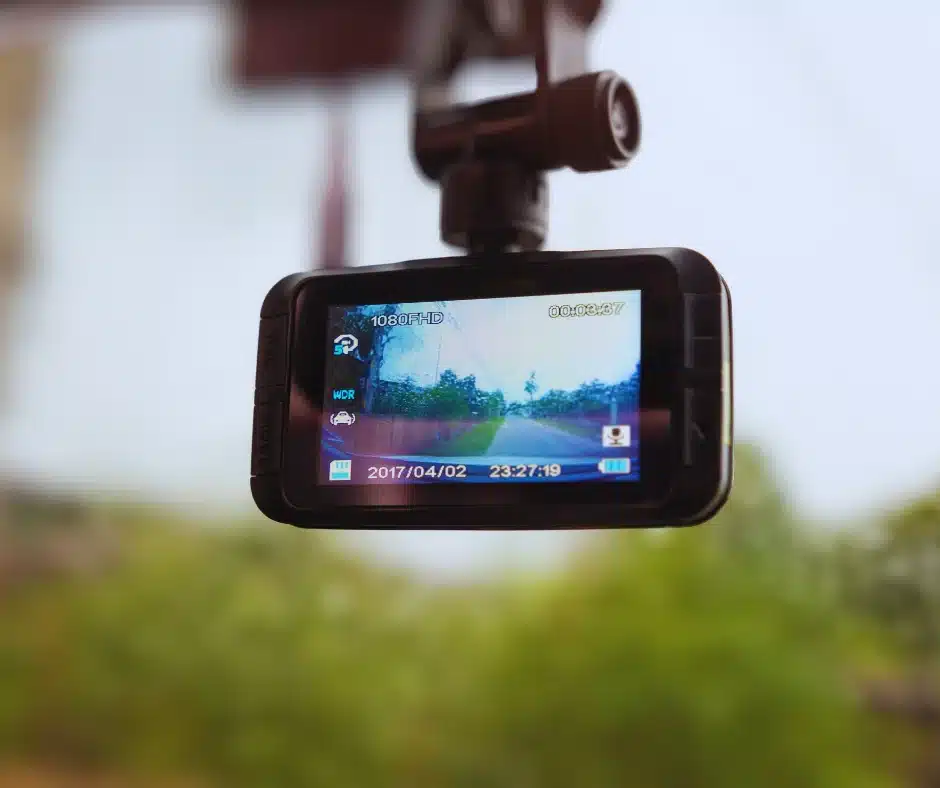
In personal models, AI might handle things like parking alerts, or notify emergency contacts if the car detects a crash. These features offer peace of mind ideal for consumer needs.
In a fleet setting, AI helps with driver alerts, automatic event tagging, and even driver behaviour recognition. For example, some systems will warn drivers if they’re distracted or following too closely. These tools help you prevent accidents and reduce risk across the board. AI also helps analyse and make sense of the collected data.
Privacy and data management
Privacy is handled very differently in fleet environments. If you’re using a dash cam in your own car, you’re responsible for the footage. Privacy concerns surrounding consumer dashcams centre on how manufacturers use customer data. According to the IAPP Privacy and Consumer Trust Report 2023, 68% of consumers are concerned about how their data is collected and used.
But in a business, things are more complicated. Vehicles may be shared, driven for personal and business mileage, and used on customer sites with their own privacy rules.
Commercial dash cam systems take this into account by offering features such as facial blur, data encryption, the ability to switch off GPS location, and the option to switch between personal and business use. This is combined with more physical methods like buttons and lens covers.
While personal dash cams may include some features, fleet dash cams offer enhanced intelligence. For instance, they not only blur passenger faces but can also obscure license plates and pedestrians, which significantly enhances privacy.
Protecting your customers
Privacy isn’t just about your drivers, it’s about your customers too which is important in business. Commercial vehicles often visit customer sites with specific privacy requirements, such as no-recording policies. With a standard dash cam, you’re left with poor options: keep recording and risk breaching the customer’s rules, or ask drivers to disconnect the device something that may not be possible if the system is hardwired, or could result in damage or forgetfulness to put the camera back on after leaving site.
Fleet-focused dash cam systems solve this with smart privacy features. Think lens covers, pause modes, and colour-coded indicators that clearly show when a camera is off, helping you stay compliant and avoid awkward conversations or penalties. Some systems let you disable recording while keeping safety alerts active, or give drivers control over which cameras to turn off. These features help you meet privacy needs without compromising operations, safety or accountability.
Built for business growth
As your business grows, so does your fleet. What starts with one company vehicle might quickly expand to five or more. As discussed earlier, consumer dash cams typically link to a single mobile app on a single phone. That works fine when it’s just you and one vehicle, but what if you need to access video from multiple vehicles at once? What if you hire a fleet manager and your colleague needs access to? Where you may have saved some money by going for a consumer dash cam, the time, resource, and workaround effort start to erode all the perceived savings.
Fleet dashcam solutions let you label cameras by vehicle or driver, manage multiple units from a single interface, and switch between feeds quickly. Telematics providers have been supporting fleets for a long time, so they know that businesses grow and this flexibility is key when your operation scales.
Managing a mixed fleet
Standard dash cams are usually designed for cars and vans unless specifically mentioned. They’re not always suitable for some vehicles such as horseboxes, vans, HGVs, or specialist vehicles like refuse collection, road sweepers and aviation vehicles.
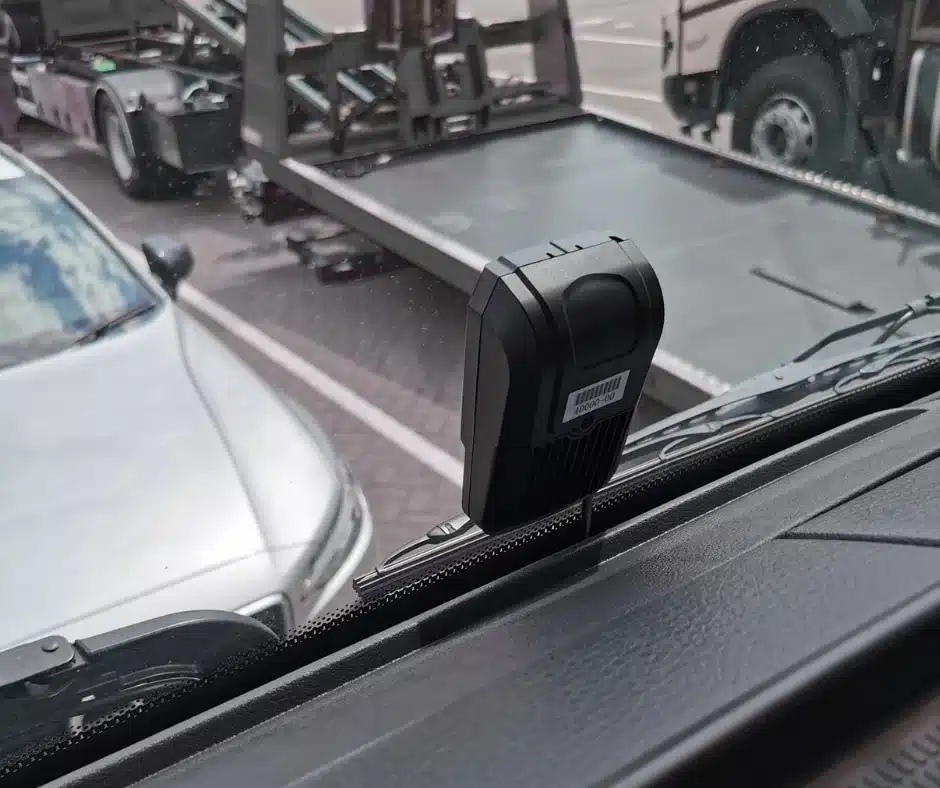
In our experience as installers, we frequently encounter specific challenges when it comes to using personal dash cam systems for business. Common issues include cables that are too short, mounts that are incompatible with curved windscreens, and systems that do not have the necessary IP rating for external camera applications. It’s important to note that solutions that may be effective for individual cars often do not translate well to commercial fleets. These hurdles are a regular part of our professional installation work.
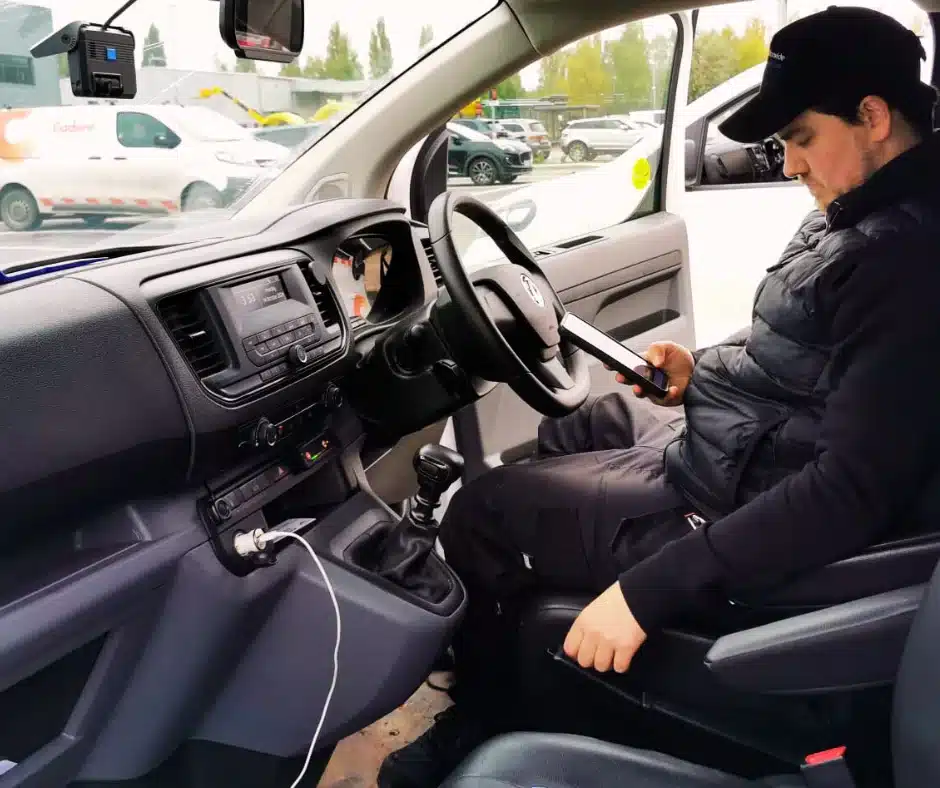
On the other hand, fleet dash cam systems are made to handle these challenges. Manufacturers supply longer cables, waterproof housing, rugged mounts, and adapters to suit different vehicle types. That makes installation quicker and ensures the system works reliably, regardless of what’s in your fleet.
Subscriptions and updates
Most consumer dash cams don’t come with subscriptions, unless they’re for additional features, optional subscriptions, such as those with cloud storage or mobile alerts and a data plan for 4G connectivity. You buy the unit, plug it in, and that’s it.
Fleet dash cams usually include a subscription with flexibility over the number of vehicles and options for more features. These systems are constantly being updated with fixes. Telematics providers continually add new features, enhance their software, and release updates to meet changes in fleet regulations and evolving customer needs.
Summary
Consumer dash cams focus on personal convenience, safety, car security and parking protection. They are designed for private car owners and families with a strong focus on safety and security. The overarching theme here is peace of mind. Small fleet operators can benefit to a degree.
Consumer dashcams are designed for individual use. They’re simple, affordable, and practical for families or solo drivers who want a bit of extra peace of mind. Whilst they can be used in commercial vehicles, they won’t cut it. Business dash cam systems are designed to support your operations at scale. They help with safety, insurance, driver management, compliance, privacy, and more. Therefore, if you want complete visibility over your vehicles and peace of mind that your business has adequate technology to support your drivers and fleet managers, a commercial fleet dash cam system is the way to go.

